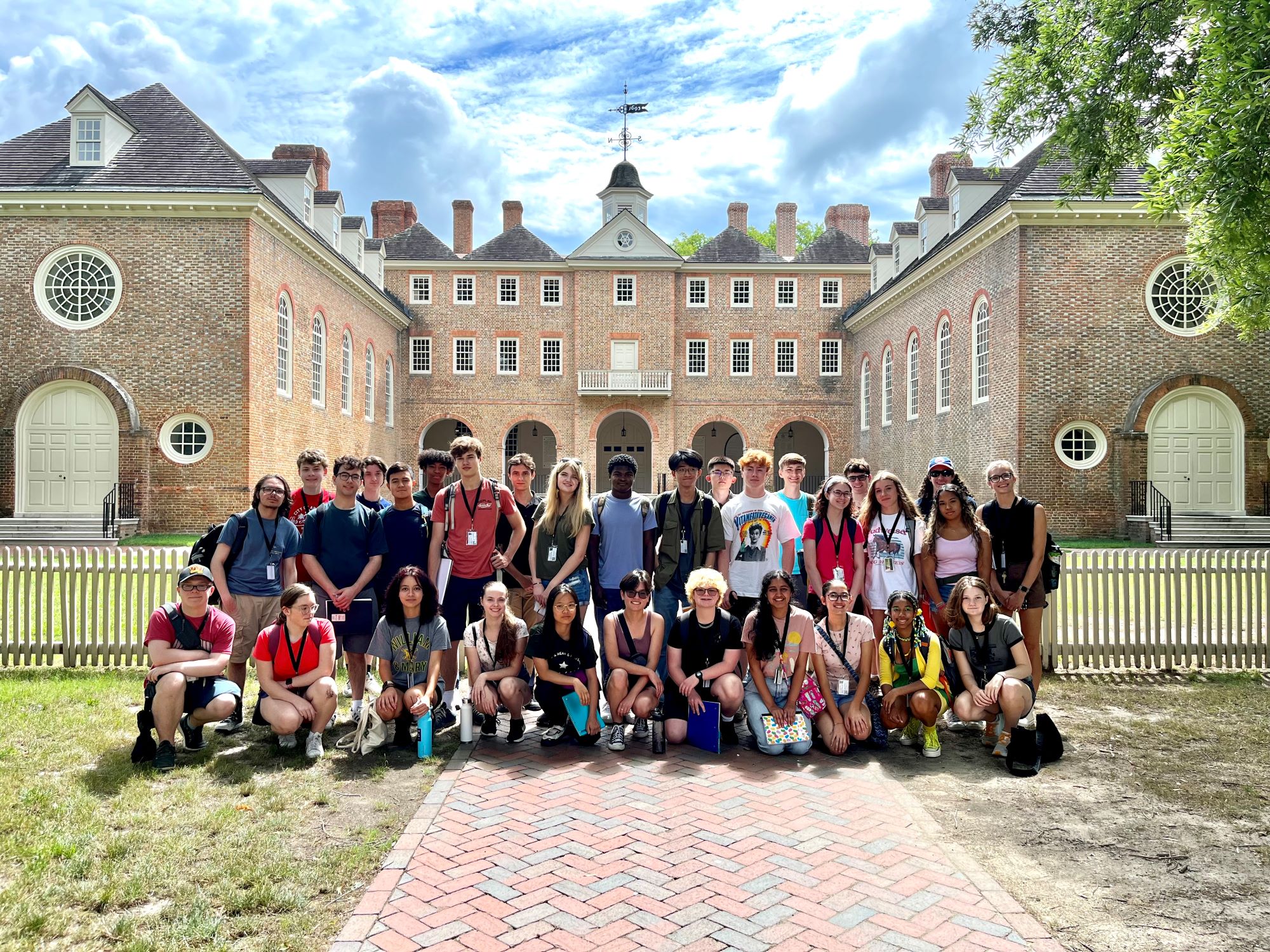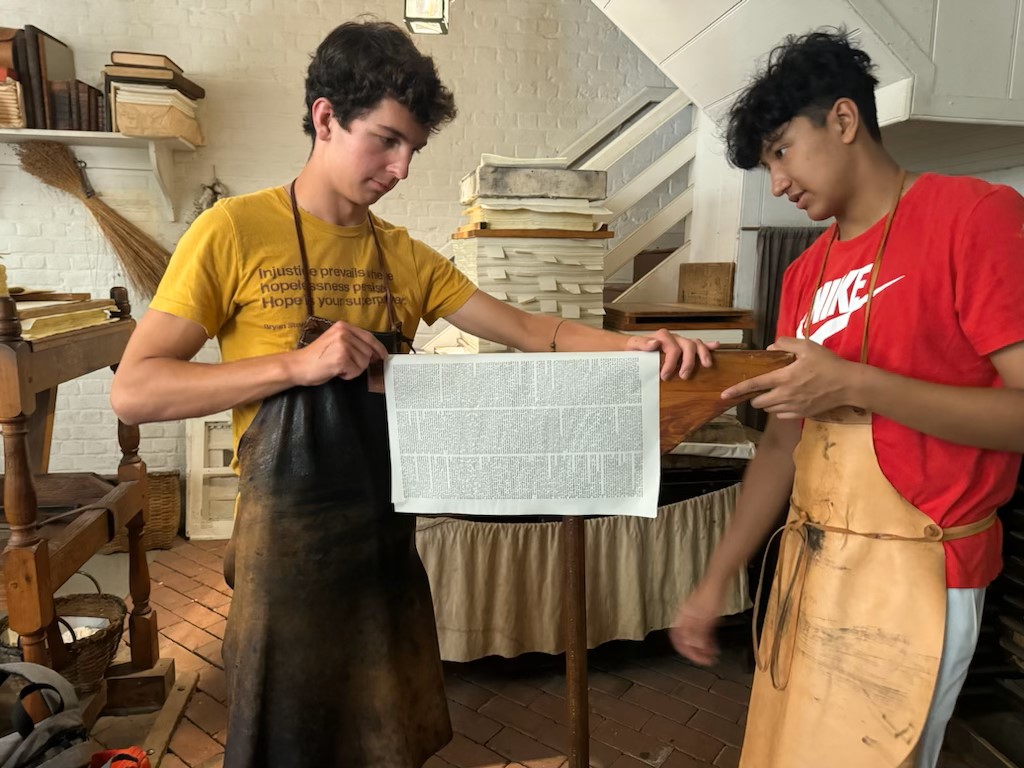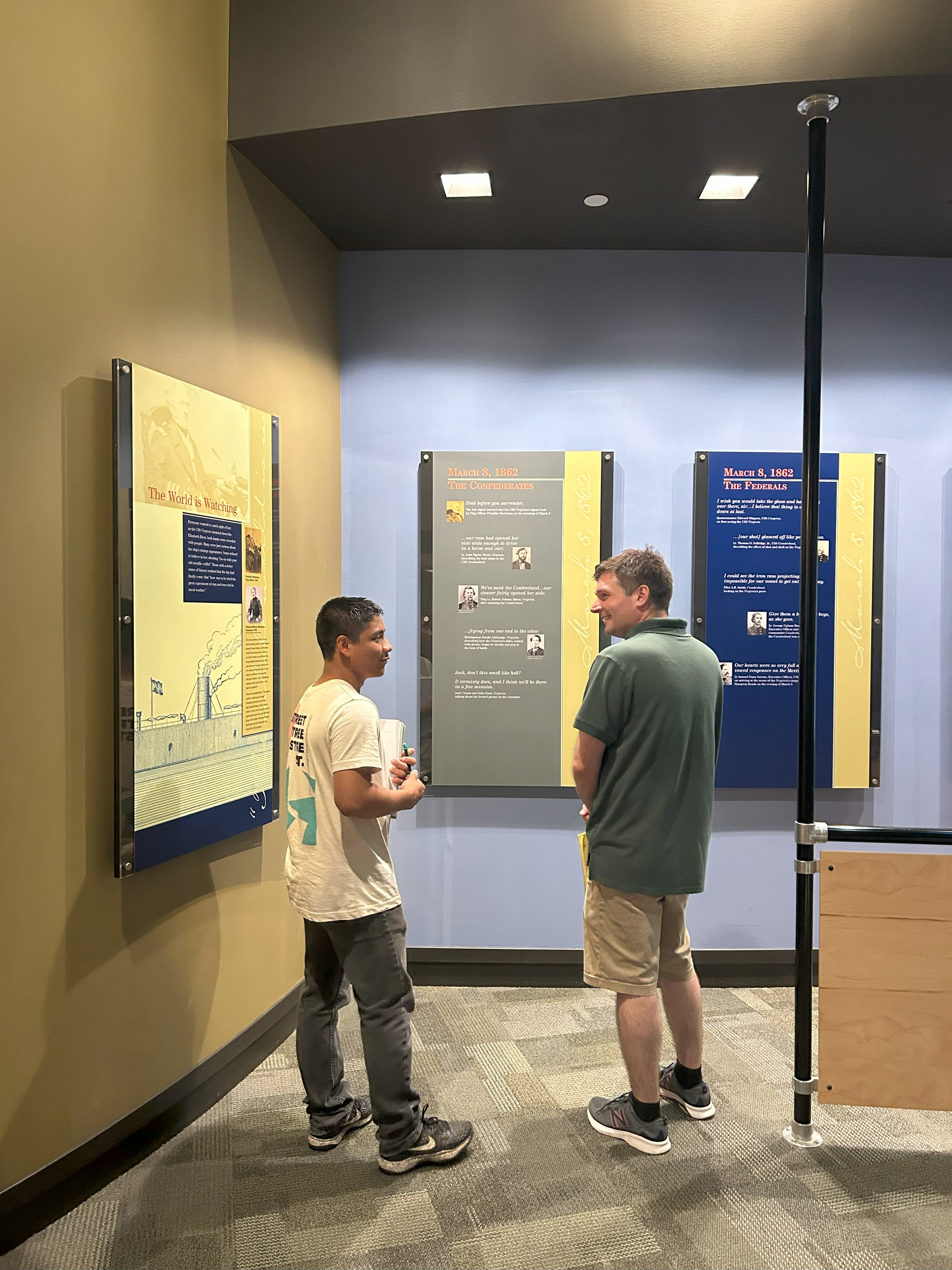“History is a verb”: pre-college program invites students to actively engage with history
 Summer is a busy time at William & Mary, especially for young history enthusiasts.
Summer is a busy time at William & Mary, especially for young history enthusiasts.
Since 2002, almost 2,300 high school students from around the world have traveled to William & Mary each summer to absorb the region’s history through the National Institute of American History & Democracy’s Pre-College Program (NIAHD). When they leave, they’ve not only learned about the history of the region but also about the craft of history – how to analyze and interpret evidence as a historian.
NIAHD began in 2002, funded by two congressional grants that supported the program until 2005; since 2006, the program has been self-funded. William & Mary history professor Jim Whittenburg and his wife Dr. Carolyn Whittenburg were the founding directors of the program.
Julie Richter Ph.D. ’92, Director of NIAHD since 2017, said that the program’s primary aim is to immerse students in the places where history happened.
“Our goal is to make history as experiential and real as possible,” Richter said, “and include as many voices from the past as we can.”
Over the course of two three-week sessions in 2024, the pre-college program offered four classes: “Artifacts of American History,” “American Independence,” “The Road to the American Revolution,” and “The Road to the United States Civil War.” The classes reflect the region’s centrality in colonial and Civil War era history.
Participants are quickly immersed in the region’s history with trips to numerous historic sites and museums. Sarah McCartney ’08, M.A. ’10, Assistant Teaching Professor of History, has worked extensively with NIAHD for more than a decade. “The Pre-College Program courses specifically focus on place-based and object-based history, and we engage with the past by seeing and doing,” McCartney shared.
On a visit to Colonial Williamsburg, for example, participants worked alongside expert tradespeople at the printing press or joinery to experience the labor firsthand. A visit to Fairfield Plantation in Gloucester, Virginia, was accompanied by participating in archaeological digs. And a trip to Stratford Hall, the Lee family home, invited students to consider all the people who lived in that household – women and men, enslaved and free.
Through these experiences, instructors try to show students that history is an active process, not merely a passive regurgitation of names, dates and events.
“History is not a noun. It’s a verb,” Richter said. “It’s something that you do. You talk about it, think about it, experience it and question it.”
The students are eager for that kind of engagement. “NIAHD students are always stumping tour guides with various why-based questions,” said Robyn Schroeder, Assistant Director of NIAHD. “We hear a lot from tour guides, ‘no one's asked me that before.’”
Participants are also eager to share their enthusiasm with their peers. “You get to stand on the grounds where Pocahontas and John Rolfe got married and then you get to discuss what you learned with a group of equally dedicated and interested students your age. How cool is that?” said one student. 
Mark Guerci ’11, M.A. ’15, Ph.D. ’21, a longtime instructor for NIAHD, said that the program’s emphasis on place-based history has an enormous effect on the students’ understanding of the field of history.
Guerci noted that “by the time the program ends, I think students can move beyond the idea the history is just a body of received knowledge about the past and towards a more sophisticated understanding of history as an ongoing conversation.”
NIAHD depends upon close partnerships with numerous historic sites and museums to facilitate this advanced method of learning.
Ann Marie Stock, the Presidential Liaison for Strategic Cultural Partnerships at W&M, hails NIAHD as being at the forefront of partner-building between William & Mary and other regional institutions. “The initiative was conceptualized as a collaboration drawing upon the resources and expertise of both W&M and The Colonial Williamsburg Foundation,” Stock said. “Colonial Williamsburg has been a stellar partner with W&M, generously offering specialists to share their reflections and expertise, and inviting students to take full advantage of a host of programs and activities.”
Richter notes that NIAHD’s success also stems, in addition to the generous engagement of its partner institutions, from the instructors the program employs each summer – primarily Ph.D. candidates in the W&M history department. “We have amazing grad students, past, current, and future, who want to learn how to teach place-based history,” Richter noted.
“It’s built into our mission to give those opportunities to graduate students, because teaching for us in the summer can sit in their professional profiles in a lot of ways,” Richter said. For graduate students planning careers as professors or teachers, they gain invaluable experience by working closely with the participants.
Guerci is one such former W&M graduate student who benefited from the opportunity to work with NIAHD. He has taught courses for the pre-college program since 2016 and is currently an Assistant Professor of History at Luther College. “I see concrete payoffs from this experience all the time in my professional life,” Guerci said. "I will be teaching a course in public history at Luther College in 2025, which is something I would never have been able to do without the exposure to public history that the NIAHD program provides.”
Professional development isn’t just for the doctoral-level instructors, however. Pre-college program participants also get an insight into careers in history and museum studies that they may never have been exposed to.
“Students were actively conversing about the fact that they didn't know you could have a career in, for example, exhibit design,” Schroeder said. “But they got to hear from Colonial Williamsburg curators and exhibit planners about things like how you build the mounts to put an object on display, and it really broadens their view that there are a huge range of opportunities in the public history field.”
 When the summer draws to a close, the pre-college students leave Williamsburg. But NIAHD never rests. With the start of the academic year, Richter and Schroeder’s attention turns to the undergraduate and graduate students at W&M who enroll in the NIAHD Program in Material Culture & Public History. Since 2002, over 500 students have joined the undergraduate program to learn about place-based history and museums. And starting in 2023, graduate students were offered the opportunity to focus their studies in public history.
When the summer draws to a close, the pre-college students leave Williamsburg. But NIAHD never rests. With the start of the academic year, Richter and Schroeder’s attention turns to the undergraduate and graduate students at W&M who enroll in the NIAHD Program in Material Culture & Public History. Since 2002, over 500 students have joined the undergraduate program to learn about place-based history and museums. And starting in 2023, graduate students were offered the opportunity to focus their studies in public history.
Some pre-college participants choose to matriculate at W&M and enroll in NIAHD’s undergraduate program. But all participants, having spent three weeks in Virginia’s colonial capital, leave with a better understanding of how history is practiced – as a verb.














